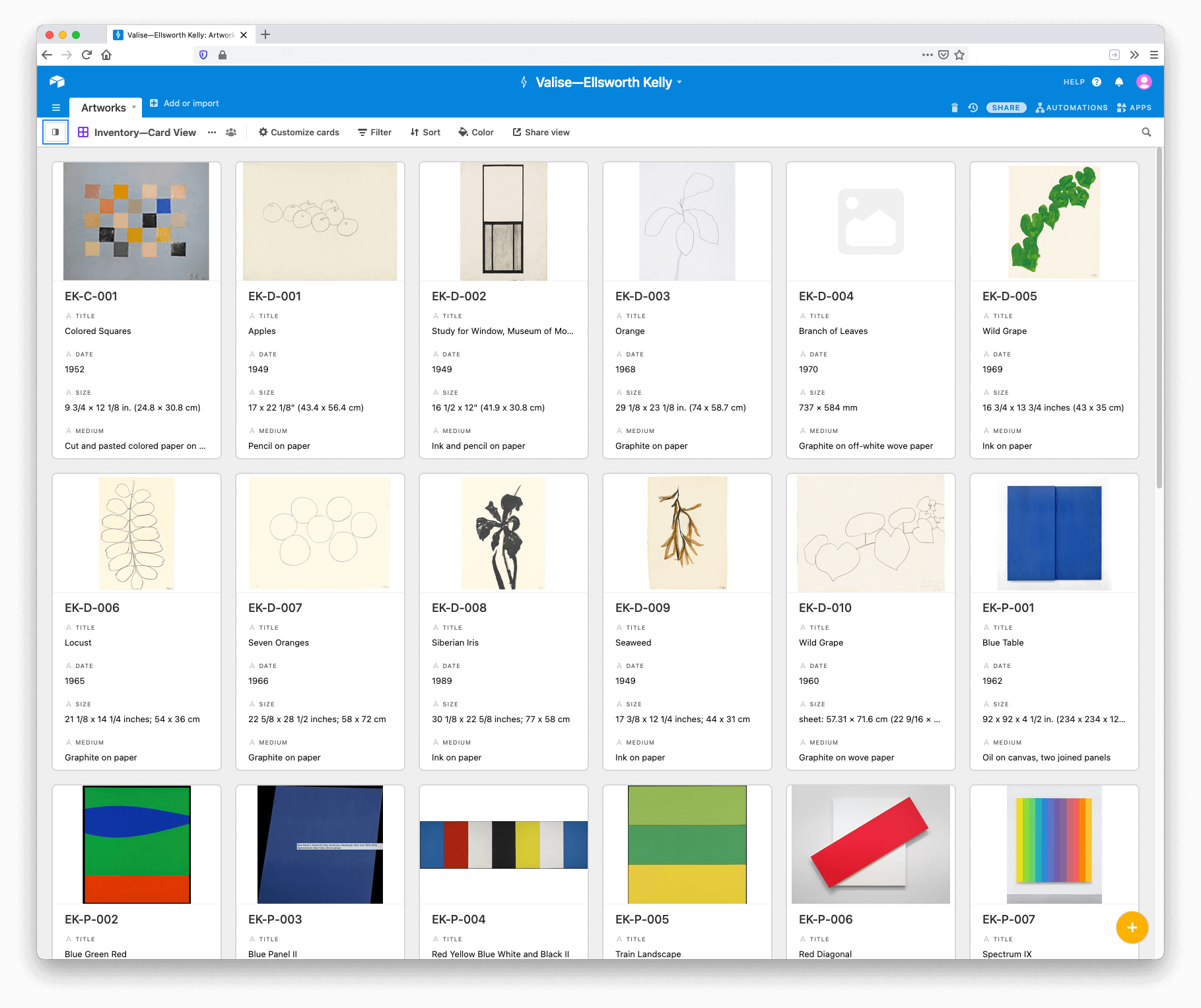Introducing Valise
On a tool I made to help artists manage their studios
UPDATE, May 2024: For the past year I’ve worked with my friend, designer and developer Ross Zurowski, to build a new, expanded, and better version of Valise. We’ve just opened it up to users in a public beta. See the website at valise.works for more information!
Museums and galleries pay thousands of dollars to manage their inventory with software like TMS and ArtBinder. I want to help artists enjoy the benefits of such robust systems and spend less time sweating administrative details. So I’ve built Valise, a flexible, easy-to-use, and cloud-based studio-inventory database that you can likely run at no cost.

Why? Many artists I know are successful by conventional standards: they are represented by galleries; they participate in biennials and other thematic exhibitions; their works are purchased by both collectors and museums. It’s a fortunate position, but one that comes with challenges, in particular balancing the requirements these opportunities generate with a need for the mental space to be creative. These artists are essentially small-business owners who mostly cannot hire employees to deal with small-business logistics.
Managing a studio’s inventory is often the most difficult and time-consuming of these challenges. In speaking about this with artists, I have discovered that many do not own their data: once they establish a relationship with a gallery, they offload the cataloguing and tracking of their artworks to that gallery in order to concentrate on making new work. I use the phrase own their data for its resonance with social-media commentary. Many journalists, tech critics, and nonprofit organizations advocate owning your data to enhance your privacy and ensure it isn’t lost when a service is changed or disabled. I believe it’s imperative for artists to own their data, too.
I’ve spent my career creating and maintaining systems that track complex data: editorial processes that ensure magazine reviews and essays are properly edited, fact-checked, and paired with illustrations, for example, or multi-year schedules that chart the deadlines for large exhibitions and heavily illustrated books. I am also married to an artist. Over the years, I have built and refined a system for tracking her studio’s inventory and all the information created by her artworks moving through the world. I have seen how it helps her and want to share that system with you.

The Details. The template I’ve created is built on top of Airtable, a mature and stable software. Airtable’s free accounts have proven sufficient for holding a decade’s worth of my partner’s art, with years of room to grow, and the service allows you to export your data easily should you decide to switch.
Below is a four-minute video demonstrating an example database that I populated with artworks by Ellsworth Kelly. Watch it and you’ll see that it tracks much more than the title, date, medium, size, and price of the artworks. Until I’m no longer able to handle the incoming requests, I’ll gladly set up an online chat or phone call to help customize it for you—and talk with you about the opinions, verging on philosophical principles, that have shaped it. Just email me at brian@sholis.com.
How can this help you? If a curator is considering artworks for an exhibition, or a magazine editor is sourcing illustrations for an article, you can quickly create and update a private view that includes all the information they require (and none they don’t). Need to discover the last time you used a particular combination of materials, whether you’ve used a specific title, or remember which works are at the frame shop? Want to keep a running list of artworks you’re considering for an upcoming show? Use the search and filter functions. Away from your computer and can’t remember a detail you need in conversation? Bring it up on your phone. My partner has used Valise for all these reasons and many more.
§
This template can be customized for collectors or small galleries, too. I often work with arts institutions and creative businesses to help structure information and institute better workflows. I want to make collaboration easy—something that saves time and money. Email me and describe the problem you’re having; I’ll be happy to talk through it with you.